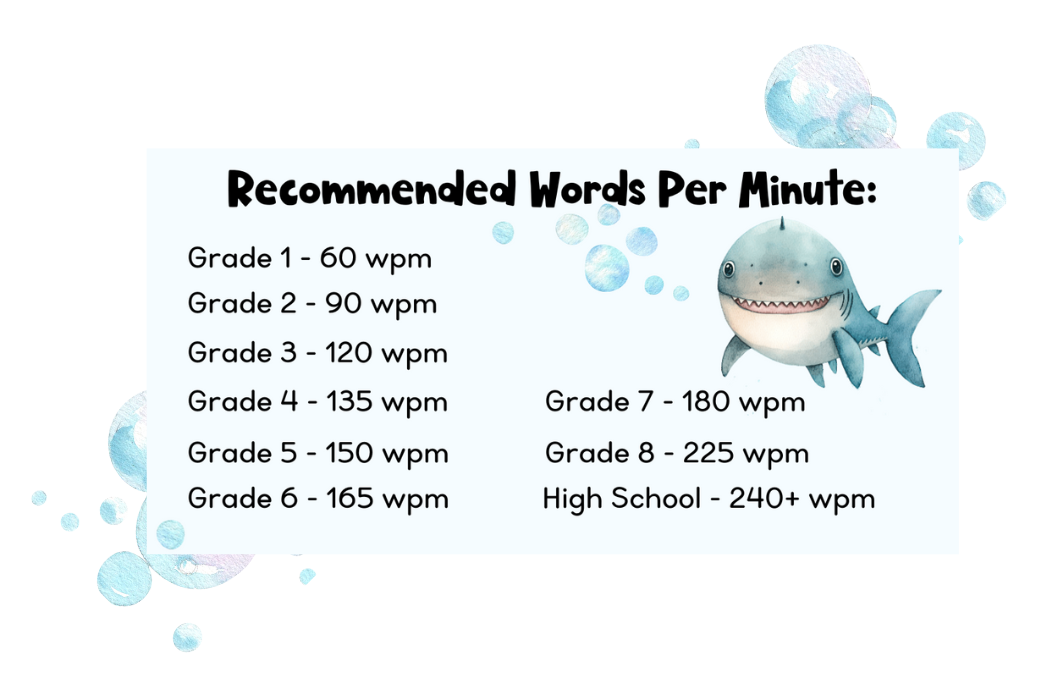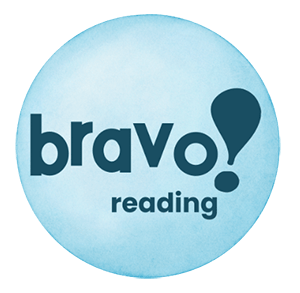How To Make Reading Fluency Easy For Kids With Dyslexia!
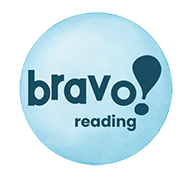
One of the most important reading skills of all is reading fluency. It is the ability to read text accurately, quickly, and with proper expression. Consequently, excellent reading fluency allows for better comprehension and overall reading enjoyment.

For many children with dyslexia, achieving reading fluency is a significant challenge. Dyslexia, a language-based learning disability, affects the way the brain processes written and spoken language. This debilitating condition makes it difficult to decode words and recognize them by sight.
Kids with dyslexia struggle to read and decode words, often enunciating slowly and with great labor. This type of reading hinders reading comprehension abilities and affects overall school performance.
In addition, poor fluency skills can diminish a child’s confidence and interest in reading.
Understanding the specific difficulties faced by dyslexic learners is crucial in developing effective strategies to support and improve their reading fluency. This ultimately empowers them to become proficient and confident readers.

Driving Reading Fluency: How Decoding Is The Ultimate Fuel
Decoding is the ability to sound out letters and turn them into words. This must be done quickly and easily for automaticity to set in.

Automaticity is just a big word that means the task is done without putting conscious thought into it.
If your child struggles with reading fluency, then stumbling over words, guessing at words, and taking an extra long time to decode or sound out words is the norm. Strategies for sounding out words are weak or missing entirely.
When this happens, kids hate to read. They avoid it at all costs, often either retreating to avoid it or having meltdowns when it’s time to read.
Why You Should Never Force Your Child to Read Faster!
All too often, children with dyslexia are forced to read faster and faster without being shown proper decoding skills to accomplish this goal. This only puts fuel on an already raging fire! If your child has dyslexia, then different modes of learning must be used.

Kids with dyslexia don’t learn like other children. That doesn’t mean that something is wrong with them or that they aren’t smart. As a matter of fact, being of average or above average intelligence is one of the symptoms of dyslexia.
If your child has dyslexia, then most likely learning will be hands on or tactile. Your child learns by doing. Because of this, decoding needs to be taught through movement…large motor movements to be precise. Movement is the key to learning for kids with dyslexia!
New and Improved Meets Dangerous Traditions in Reading Fluency Wars
Traditional reading programs rely heavily on fluency building, yet fail to give your dyslexic child usable strategies to succeed. Some reading programs that promote fluency building will have your child pressured into reading faster in an effort to raise fluency scores.

This simply doesn’t work for a child with dyslexia, as panic sets in and there aren’t any usable strategies included in the program, only the pressure to read faster.
Truthfully, programs like this do more harm than good! Kids with dyslexia already have poor reading habits, and these timed reading programs only force more bad habits to set in. Even worse, kids hate the pressure of performing these timed readings.
That’s like trying to teach someone to run a marathon without stretching, without learning proper form, without slowly building up muscles, without rest and recovery.
Reading Fluency will naturally fall into place when decoding skills are strong.
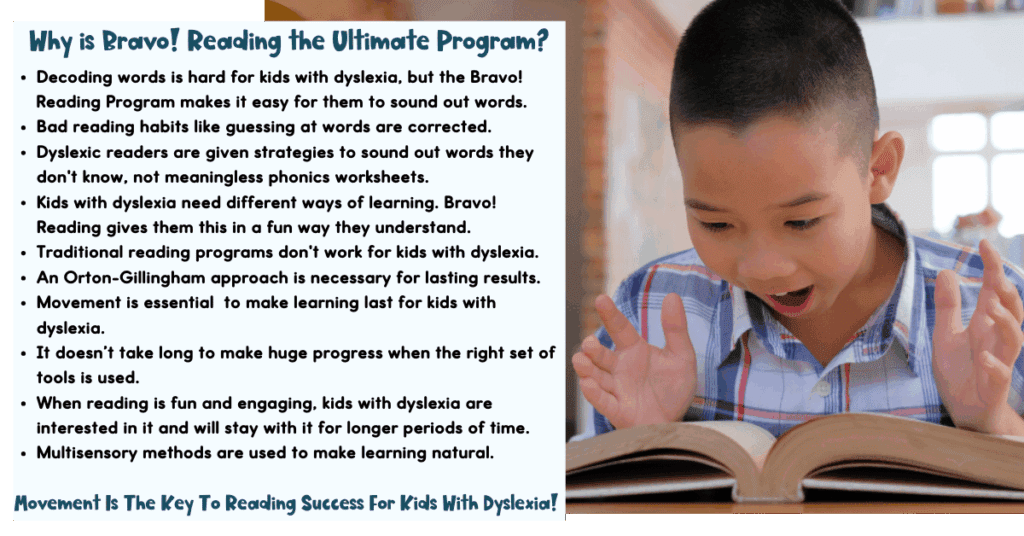
Make Decoding Strong First: It’s Not That Hard!
If your child stammers and stutters when reading out loud, you know the pain of low fluency rates. As a matter of fact, it’s painful to listen to this kind of reading. You fight the urge to jump in and offer help, to tell your child what the word is.

Wouldn’t it be nice if you could just wave a magic wand over your child’s head and have fluency scores improve?
You don’t have to resort to magic wands, pressuring your child to read faster, or hoping and praying to improve reading fluency scores. The key to making fluency stronger is in decoding.
When your child looks at a word to read, some kind of strategy must be in place to sound it out.
If the word is familiar, then your child will automatically say the word. But if the word is new or unfamiliar, some kind of strategy must take place in order for your child to correctly read the word.
Transform Ordinary to Amazing with Automatic Reading Response
The letter sounds must be known with automaticity. The ability to blend two or more sounds together to either form a word or one new unique sound (consonant or vowel blend) must also be in place.

And the ability to understand punctuation and finally blend multi-syllable words together must be in place.
This is called decoding! And it’s heavily reliant on step-by-step strategies, which are usually quite difficult for the dyslexic learner.
If your child has dyslexia, then most likely, decoding strategies are weak or maybe even missing at all. When your child comes across a new or unfamiliar word, a pause happens. It’s enough to stop the flow of learning. From there, your child will most likely guess at the word.
This, of course isn’t a sound strategy for reading. It’s really a bad habit. And guessing at words not only slows down the reader, which affects fluency, but it also affects reading comprehension – the end result of all reading – in a negative way.
How Bad Reading Habits Make for Poor Reading Fluency
Poor readers engage in three bad habits that are the “death” of reading fluency. These three bad habits are called the Three Pillars of Poor Reading. When decoding skills are taught in a way that dyslexic children understand, then these bad habits disappear – usually in a matter of just a few weeks.

The first pillar of poor reading is guessing at words. If your child has dyslexia or poor reading skills, this is the most common bad reading habit that crops up. As your child attempts to sound out words that are new, decoding strategies are weak.
Usually, a few letters in the word can be sounded out. But a glitch occurs. Maybe all letter sounds aren’t known with automaticity. Maybe the ability to blend two letters together isn’t strong. Or, perhaps your child is weak in consonant or vowel blends.
A pause happens. This stops not only the flow of leaning, but the rhythm of reading fluency. Then, your child most likely panics or feels some sort of pressure to read the word, to just get it over with. But since decoding strategies are weak or missing, your child doesn’t know what to do.
A wild “guess” at the word happens.
The Connection Between Reading Fluency And Sounding Out Words
The problem with this is obvious. Guessing at words while reading not only affects reading fluency (that little pause), but it directly affects reading comprehension because ‘guesses” aren’t definite answers. Even in kindergarten, children are tested on their ability to retain information that either they have read or was read to them orally. From there, comprehension skills requirements only increase.

Guessing at words while reading isn’t a strategy. It’s chaotic, wild, and desperate. Yet, for kids with dyslexia, it’s often their only way of decoding words, which leads them directly to the second pillar of poor reading.
Often, kids with dyslexia or other reading issues will attempt to memorize words in an effort to read. Initially, this doesn’t sound like a bad idea. After all, once you memorize something, it’s there forever, right?
Wrong.
Have you ever forgotten where your car keys are? Of course, you have!
Kids forget words just like you lose your keys.
And the difficult thing about forgetting those words is there’s no rhyme or reason as to which words are remembered or forgotten. Have you ever asked someone where they put something they lost and they just stared blankly at you? If they knew where they lost something, they’d go find it right away!
The same is true for memorizing words to read.
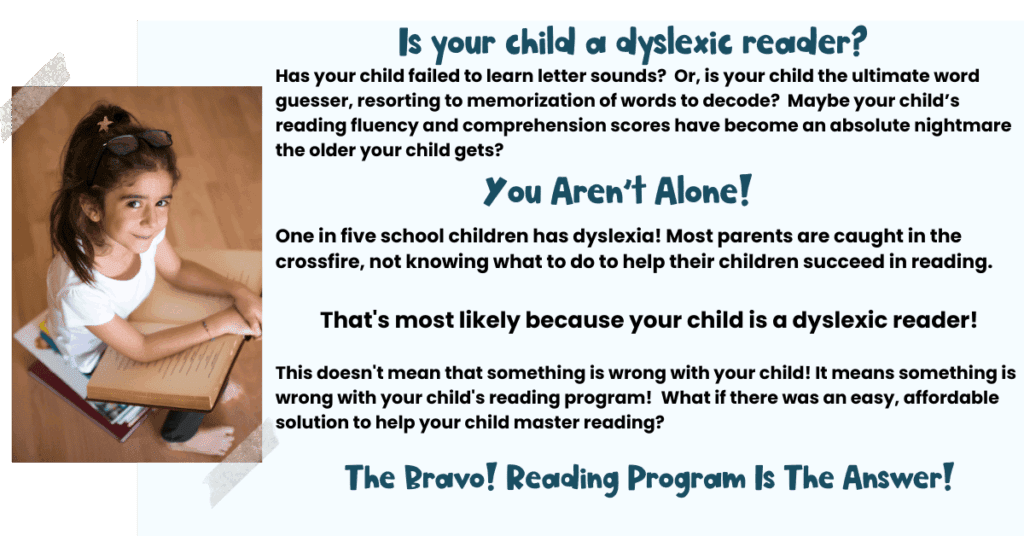
How Weak Sensory Abilities Make Reading a Chore
To make matters worse, most kids with dyslexia are weak in auditory and visual memory skills. This means they’re up against the wall before they even begin, as memorization skills aren’t strong. They lose their words more than you lose your keys!

Another big problem enters the decoding scene. Our language has over one million words in it! That’s a lot of words to memorize! Of course, we only regularly use around thirty thousand or so of those words…but still.
That’s a lot of information to wade through in an attempt to find one word. Once again, that pause happens that directly affects reading fluency. The flow of reading stops. Your child has to redirect. Meaning can be lost.
When your child uses memorization to decode, at least there’s a bit of strategy involved (as compared to guessing). However, it’s so difficult to wade through your child’s memory bank searching for those million or so words, that usually…you guessed it…guessing happens again!
The final pillar is trial and error reading. Once again, trial and error reading isn’t truly a reading or decoding strategy and only serves to confuse the dyslexic reader. When your child resorts to using trial and error reading, it’s basically glorified guessing.
Trial and error reading is a type of trial and error learning, which is when someone tries various responses in a situation, seemingly at random – until one response is successful – to achieve a goal. Random is the key word in this situation.
According to the dictionary, random means made, done, happening or chosen without method or conscious decision. For reading and decoding, anything done without a method isn’t going to bring consistent or accurate results!
The Downside Of Excellent Reading Fluency
When your child engages in trial and error reading, sometimes success is met. These small victories can often cause the biggest messes and confusion, especially to a child with dyslexia. Your child receives positive reinforcement when the word is read correctly, but your child doesn’t know how it all happened in order to consistently repeat the performance.

The next time your child comes across a word “learned” by trial and error reading, it’s like being right back to the starting line (unless it was memorized). There’s no rule, no tool, no avenue of success, no strategy to sound out the word correctly.
Because of these inconsistencies and the false positives, trial and error reading is a difficult habit to break – more so than the other two pillars of poor reading!
After using trial and error reading, kids with dyslexia have a hard time figuring out how and why they arrived at the answer. They crave a rule, a route of getting there again. But since it was a random answer, they’re left scratching their heads.
Have you ever learned something by accident? It’s kind of an odd feeling because you aren’t really sure how you came upon the knowledge. It’s like information just leaked into your brain!
Put Meaning in its Place Now!
Learning needs to be meaningful, and kids with dyslexia especially search for meaning because they have compromised learning systems. They don’t learn like other kids, so meaning and movement are their jam!

When your child has a false sense of success from trial and error reading, it’s confusing at best. Sometimes the method works, sometimes, it doesn’t.
The good news?
Like any habit, trial and error reading can be stopped, often in as little as three weeks!
Fluent readers usually have excellent comprehension skills because sounding out words isn’t difficult for them. Once a word is decoded, focus can go straight to meaning, which is the end result of all reading.
These two skills are tightly interwoven with each other, one depending on the other to get results. If your child has poor fluency, then usually comprehension is compromised. It’s simply too hard to read the words on the page, and by the time comprehension questions are asked, your child can’t remember what was originally read.
Listening to your child read out loud can be difficult if fluency is poor. Your child might stutter, stammer, pause for too long, say words incorrectly, say partial parts of words, or repeat words. You want to help so badly, but you don’t know what to do! And honestly, cheer-leading can only go so far!
Making it Make Sense for Kids with Dyslexia!
Kids with dyslexia and need unique methods to help them decode words…done in a way that makes sense the them…not the other way around. A system of decoding that makes sense to them is the magic elixir for reading fluency. Strong comprehension skills follow, because the process of sounding out words is easy.

When sounding out words is easy, then automaticity sets in.
Automaticity simply means that something can be done without placing conscious thought to it. Think about reading. As you’re reading these words, a lot is going on. If you had to sound out each letter individually, it would take too long. You’d give up.
If your child is weak in fluency, if stammering and stuttering are the norm, then a system to decode new and unfamiliar words needs to be in place. It’s the “wand” needed to bring about the magic of reading!
If your child has poor fluency skills, then stumbling over words, stammering, stuttering, saying the wrong words, and pausing for too long are the norm. It’s almost painful to listen to children with poor fluency skills read out loud. You want to help them so badly.
The problem is easy to fix. If your child has poor fluency skills, then strong decoding skills are necessary.
In a nutshell, decoding is the ability to sound out words. Decoding entails strategies to read new and unfamiliar words instead of using the Three Pillars of Poor Reading. If decoding skills are applied, there is no guesswork in decoding, no memorization of words, no trial and error reading.
The Rapid Fire Need for Sounding Out Words
Decoding skills also need to be automatic. This means your child doesn’t have to consciously think about each letter or word while reading.

That the blending together of letter sounds and the piling together of words to form sentences can occur without too much thought so comprehension can be the focus
There’s a lot that goes into decoding words, even though it seems like a fairly simple process. To start with, kids must have a firm grasp on letter sounds, including both long and short vowels. From there, two letters need to be blended together to form a word.
Your child must then be able to blend two letters together to form new and unique sounds. This is necessary for both consonants and vowels, and these combinations are called consonant and vowel blends. They are sounds like “ch”, “st”, “gl”, “oa”, “ea”, and “oo”.
The Big Kahuna of Reading Fluency: Decoding
After your child can sound out two-letter words, the process of decoding three-letter words must be strong. Typically, these words fall in the consonant-vowel-consonant pattern.

This is where traditional reading programs usually hit the reader the hardest, and it can feel like a death sentence for a child with dyslexia. They need to be solid in decoding two-letter words before sounding out three-letter words. These are small words like “cat”, “mop”, “dig”, “cup”, and “pen”
Once your child can sound out these three-letter words, the framework for decoding is built! From there, we just add more letter combinations until multi-syllable words can be learned.
For kids with dyslexia, though, the route to decoding isn’t always this straight forward. That’s because they don’t do well with traditional methods of learning. Flashcards, phonics worksheets, and traditional decoding methods don’t work for the dyslexic learner. That’s because kids with dyslexia learn differently than other children!
The Ultimate Power Of Learning With Your Hands
Kids with dyslexia are usually hands-on or kinesthetic learners. They learn best by doing instead of seeing or hearing. That’s why they need gross motor movements to help them decode. They need an Orton-Gillingham based decoding program taught with large motor movements, brain based learning, and a multi-sensory approach.
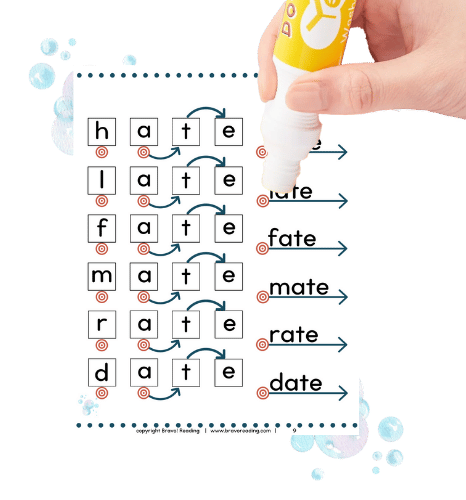
Decoding in itself isn’t new or unique. It’s probably how you learned to read.
But if your child has dyslexia, then it’s important that innovative decoding methods are used that your child will understand and be able to apply.
Traditional decoding programs simply won’t work. They are engineered for a different learner.
Kids with dyslexia are bright, creative, and need to know that learning by doing is a true power!
Phonemes – Small Bites with a Big Reading Fluency Bark
The real glue to a strong decoding program is phonemic awareness. This is the ability to work with individual sounds called phonemes, which are the smallest parts of our spoken language that combine to form words. Phonemic awareness also includes the blending together of sounds into words.
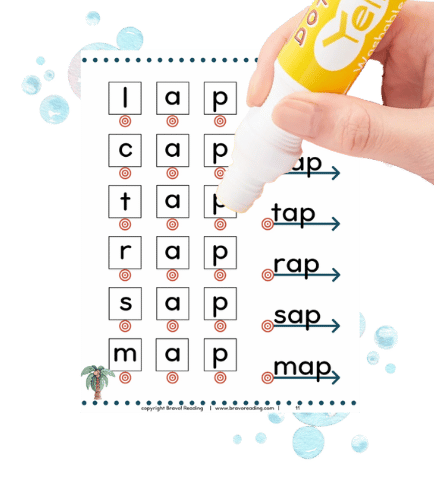
Research tells us that kids with dyslexia do best with a phonemic awareness decoding program. This means that phonemes (those small units of sound) are used as the basis of the program. Kids learn phonemes and then build upon them, step by step in a logical manner.
Phonemes are little sound units like “an”, “ip”, “et”, “om”, and “ug”. There are forty four phonemes in the English language. An innovative phonemic awareness program will build on this framework of phonemes by continuing to add letter combinations that form words in a way that meets the dyslexic learner’s needs. This means that gross motor movement is vitally important. In addition, kids need brain based learning and a multi-sensory approach to have a firm grip on these forty four phonemes as well as the sound combinations that are added to them.
If your child has dyslexia, then phonemic awareness is a strong route to reading fluency. With a firm foundation of phonemic awareness, stammering and stuttering go by the wayside and words are decoded with ease. This is because your child knows exactly what to do when encountering letter combinations while reading.
It all goes back to those original forty four sounds combinations!
The Horrific Pitfalls of Reading Fluency Norms
Most likely, if your child is in first grade or above, then a timed reading has been given at some point. This is when someone listens to your child read for a specified amount of time (usually one minute) and mistakes are recorded.

The mistakes are subtracted from the total number of words that were read. At the conclusion, your child will have a reading fluency score which can be compared to grade level expectations.
Regular timed readings are an important tool for keeping track of reading fluency progress.
But problems occur when programs are used that force your child to read faster and faster without giving strategies for fluency success or teaching decoding skills and phonemic awareness. All these programs do, especially with a dyslexic learner, is cause stress and promote bad habits like the Three Pillars of Poor Reading.
Done Well, it Works; Done Wrong, it’s a Travesty
Timed readings should only be used as a way of keeping track of reading fluency scores. When they are used to pressure children to read faster, it’s disastrous. If your child has dyslexia, then reading, decoding, and phonemic awareness skills are most likely weak to begin with.

Adding pressure to perform to this mix without providing strategies to perform is cruel.
Yet, kids with dyslexia are forced to do this as part of traditional reading programs every day.
It’s important to keep track of your child’s fluency scores and compare them with suggested norms, especially if your child has dyslexia. It gives you a starting point and a way to record your child’s reading fluency improvement or pitfalls. But that’s all fluency norms should be used for.
Following is a list of suggested reading fluency norms. If you know how many words per minute (wpm) your child reads, then you can compare the score on the chart, knowing there are small variations used in different regions, schools, etc.
